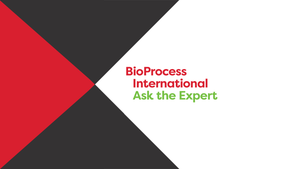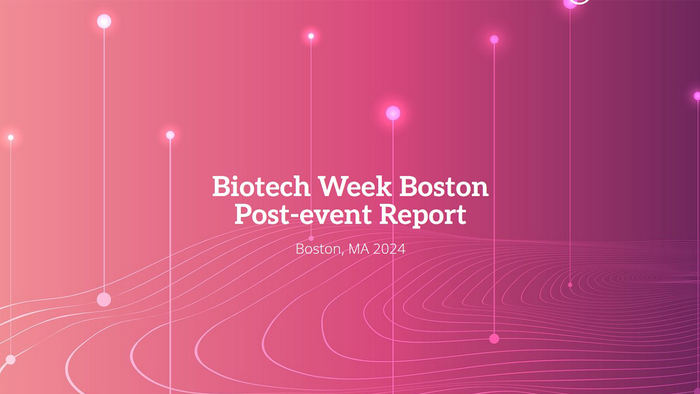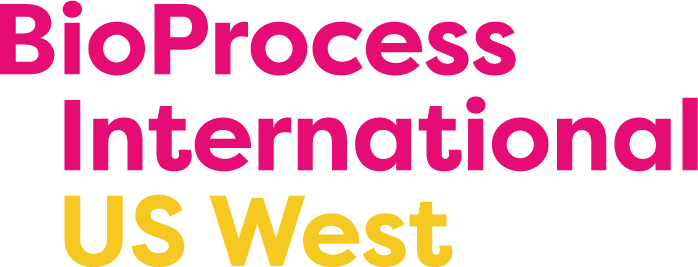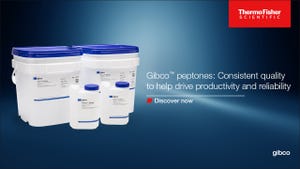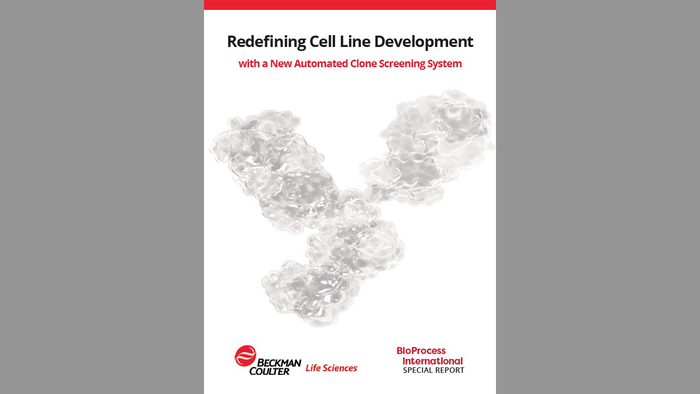Strategic Global Market Access: The Role of Health-Technology Assessments in Navigating Access Barriers for BiopharmaceuticalsStrategic Global Market Access: The Role of Health-Technology Assessments in Navigating Access Barriers for Biopharmaceuticals
January 29, 2025
Global advancements in the development of biologics and advanced-therapy medicinal products (ATMPs) are transforming the world of medicine through the approval of novel breakthrough therapies that treat previously uncurable diseases. However, many barriers stand between therapies and widespread access. Some of the most prominent hurdles are high treatment costs, which pose a significant obstacle for patients and other stakeholders, including employers, government-funded healthcare programs, commercial payers, healthcare providers, and drug manufacturers. Shared goals across the industry include improved affordability and accessibility to address health inequities and quality of life (QoL) for patients worldwide.
Across the globe, several initiatives have been established to support biopharmaceutical development and improve patient access. In a 2023 briefing, the US White House Office of Science and Technology Policy presented important goals for the US bioeconomy related health advancements (1). Over the next 20 years, the objective would be to increase manufacturing scales of cell and gene therapies (CGTs) to expand access, reduce health inequities, and decrease manufacturing costs of cell-based therapies tenfold. Government programs include the UK Life Sci for Growth package with its several investments:
• £121 million to enhance commercial clinical trials and expedite delivery of new medicines to patients, with up to
£48 million for scientific innovation to prepare for future health emergencies
• £154 million to expand biological data banks for supporting scientific discoveries that benefit human health
• £250 million to encourage pension schemes to invest in leading science and technology companies (2).
Additional support in the United Kingdom and European Union (EU) includes the AGORA Initiative — a consortium founded by researchers at Great Ormond Street Hospital for Children (GOSH). The organization brings together international stakeholders who represent academic groups, regulators, funders, patient advocacy groups, and drug developers (3). Their goal is to create sustainable solutions for children with rare and ultrarare diseases to access novel gene therapies. Additionally, the Global Gene Therapy Initiative (GGTI) enables access to curative medicines for conditions such as sickle-cell disease (SCD) and human immunodeficiency virus (HIV) infection in low- and middle-income countries (4). Such a groundswell of international support highlights the need for biomanufacturers to initiate robust market-access programs that help to give patients access to medication for fair prices.
The Role of Health-Technology Assessments
Regulatory approval guarantees neither a drug’s successful launch nor patient access. Effective go-to-market strategies must incorporate several critical factors, including high costs, potential scarcity of clinical-trial data, and unique financial challenges posed by curative treatments. Moreover, reimbursement processes for biopharmaceuticals vary significantly by geographic location, often influenced by whether payers require health-technology assessments (HTAs) (5). O’Rourke et al. define an HTA as a “multidisciplinary process that uses explicit methods to determine the value of a health technology at different points in its life cycle. The purpose is to inform decision-making to promote an equitable, efficient and high-quality health system” (6). Such processes inform decision-making related to drug pricing and reimbursement, particularly in countries with universal-coverage healthcare systems.
HTAs rely on efficacy and safety data from registration trials, patient-health–related QoL (HRQoL) measurements, life-expectancy impacts, and cost data to make reimbursement recommendations. Incremental cost-effectiveness ratios (ICERs) compare new drugs to standards of care by providing a ratio of extra cost per an extra unit of health effect. That ratio, known as the cost per life year gained, enables decision-makers to determine monetary values of new technologies or drugs relative to existing treatments. If that ratio falls under a designated threshold, then the new drug theoretically provides a more cost-effective use of finances than the available treatments that it might displace (7). The cost-effectiveness threshold often is described as the upper limit of willingness-to-pay for health gain. That metric varies by country.
The HTA landscape is evolving as a growing number of high-cost drugs are being developed, making value-based arrangements (VBAs) increasingly relevant. In the United States, insurers conduct internal reviews to determine reimbursement for new products. By contrast, HTAs may be mandated at national or regional levels in Europe and countries such as Australia and Canada. Additionally, collaboration is increasing among national HTA bodies, as evidenced by the EU Joint Clinical Assessment (JCA), which was implemented in January 2025 (8).
Strategic Market-Access Challenges and Opportunities
As patients around the world seek rapid access to the newest biopharmaceutical therapies, regulatory and payer decisions are becoming more complex. A successful market-access plan would include several factors, as detailed below.
Market-Access Programs During Clinical-Trial Phases: Incorporating market-access plans early into drug-development programs can enable cross-functional teams to create and execute strategies that increase their likelihood of success in meeting regulatory requirements and payer approvals within a defined timeframe. Historically, clinical trials have been designed using a sequential phase 1–3 approach that takes many years to complete, with low overall success rates. Recent industry focus on clinical-trial innovation comes with the intent to expedite patient access to new medicines and improve efficiency and regulatory-approval rates.
To accelerate approval of drugs for serious rare diseases without alternative treatments, phases 1–3 of clinical trials can be adapted to integrate traditional phases 2 and 3 within a single study design (9). Adaptive study designs, enrichment designs, and use of master protocols can all be beneficial. However, they also provide challenges, notably in regards to acceptance of clinical data by payers and HTA agencies. Market-access teams should understand the key characteristics of clinical endpoints for biopharmaceuticals while interpreting the data collected because such information reflects the likelihood of acceptance by payers.
Generating data through real-world evidence (RWE) provides insights into real-world drug performance and offers comprehensive understanding of drug safety and effectiveness across diverse patient populations outside of clinical-trial settings. Traditionally used for postmarket safety monitoring, RWE now is integrated throughout product life cycles (10). Such integration has led to real-time data analysis and improved understanding as developers gain insights into disease, approaches to treatment, and ways to substantiate coverage decisions. Companies need to conduct real-world analyses on their product values and comparative effectiveness (11) while focusing on specific subpopulations, such as individuals with rare diseases. Collecting and using patient-reported outcomes (PROs) can enhance RWE generation and provide valuable information on the effectiveness, safety and tolerability of health interventions from a patient perspective (12).
RWE helps drug developers to demonstrate product values to payers and regulators by providing evidence of drug benefits and risks in everyday clinical settings. That is particularly important for securing reimbursement when clinical-trial data alone are insufficient. RWE also can be used to fulfill postapproval requirements because it offers a cost-effective, time-efficient way to gather evidence needed to support ongoing market access and reimbursement. By integrating RWE into such strategies, manufacturers can address payer concerns more effectively, improve the likelihood of favorable reimbursement decisions, and ensure that lifesaving therapies are accessible to the patients who need them most. Evidence should demonstrate how treatments address otherwise unmet medical needs, including incremental improvements in both clinical and economic outcomes (11). Data then are transferred to a diverse range of payers and healthcare systems, whether through public or private payers in the United States or single-payer systems in Europe (13).
Average time to reimbursement — called from bench to bedside — differs in each market. On average, drug regulatory approval takes 10.5 years, and reimbursement-approval negotiations and decisions typically only occur after a drug has received regulatory approval (14); However, real times vary considerably. Delays in pharmacoeconomic evaluation and price negotiations can increase wait times for reimbursement approval and subsequent patient access. In 2023, the average reimbursement time for all branded drugs ranged from 282 days in Germany to 398 days in Australia and 665 days in Canada (15). In the United States, time to reimbursement depends on individual insurers and the nature of the insurance (e.g., state-based or employer-sponsored insurance).
Addressing Global Variations in Reimbursement Approvals: Market-access strategies vary by country and payer model. Obtaining European Medicines Agency (EMA) or US Food and Drug Administration (FDA) approval does not guarantee that a drug can be prescribed until it is included in each country’s reimbursement catalog (see the “Value Assessment of Advanced Therapies” box and Table 1 for more information). Throughout the development phases for new biopharmaceutical products, market-access teams guide programs with a process incorporating the following attributes:
• early visibility into total health-system costs related to specific diseases
• favorable positioning on drug formularies, determined by a Pharmacy and Therapeutic (P&T) Committee or an equivalent entity, usually comprised of primary-care and specialty physicians, pharmacists, and other healthcare professionals (16)
• support for payers that engage in risk arrangements (e.g., value-based contracts or managed-entry agreements), including alternative payment models such as risk share and pay-for-performance (17).

Table 1: Value-based arrangements (VBAs) for five cell and gene therapy (CGT) products; CMS = Centers for Medicare & Medicaid Services, MLD = metachromatic leukodystrophy, OBA = outcome-based agreement, SMA = spinal-muscular atrophy, SCD = sickle-cell disease, VOC = vaso-occlusive crisis.
1 Orchard Therapeutics Outlines U.S. Launch Plans for Lenmeldy™ (atidarsagene autotemcel), the Only Approved Therapy for Children with Early-Onset Metachromatic Leukodystrophy. Orchard Therapeutics: London, UK, 20 March 2020; https://ir.orchard-tx.com/node/10096/pdf.
2 What Is Sickle Cell Disease? Sickle Cell Anemia News, 16 September 2021; https://sicklecellanemianews.com/what-is-sickle-cell-anemia.
3 Wexler M. Vaso-Occlusive Crisis. Sickle Cell Anemia News, 4 January 2022; https://sicklecellanemianews.com/vaso-occlusive-crisis.
4 Pagliarulo N. New CMS Pilot To Test Payment Scheme for Pricey Sickle Cell Gene Therapies. Biopharma Dive, 31 January 2024; https://www.biopharmadive.com/news/medicaid-sickle-cell-gene-therapy-pilot-outcomes-payment/706079.
5 Becker Z. Sporting a $3.5M Price Tag, CSL and uniQure’s Hemophilia B Gene Therapy Crosses FDA Finish Line. Fierce Pharma, 23 November 2022; https://www.fiercepharma.com/pharma/csl-and-uniqures-hemophilia-b-gene-therapy-scores-approval-35-million-price-tag.
6 Shapiro L. NICE Reverses Reimbursement Recommendation for Hemgenix. Hemophilia News Today, 12 July 2024; https://hemophilianewstoday.com/news/about-facehemophilia-b-therapy-hemgenix-covered-nhs.
7 Priciest Medicine Ever — Up to $2.1 Million — Treats Fatal Disease in Babies. CBS News, 24 May 2019; https://www.cbsnews.com/news/u-s-regulators-approve-mostexpensive-medicine-ever-2-1-million-to-treat-fatal-disease-in-babies.
By establishing causal relationships between diseases and outcomes, drug developers can achieve favorable reimbursements.
Companies also benefit from initiatives that provide eligible patients with consistent, personalized support, ensuring rapid and sustained access to needed drugs. A review of global evidence, policies, and challenges confirms that, even when therapies exist, patients often struggle to access them for treatment (18). Access barriers that can delay or impede access to necessary care include prevailing health inequities, such as delays in diagnosis and lack of specialized treatment centers.
Another key issue to accessing treatment is ensuring affordability. Stakeholders have introduced financial support solutions to relieve economic burdens on patients and accelerate access to care. Consensus in the industry is expanding on the need for innovation so that cost burdens are shared equitably across supply chains (19).
In the United States, patients who lack insurance can qualify for patient-assistance programs (PAPs), which provide free or low-cost medications (20). Copay-assistance programs also reduce out-of-pocket expenses for insured patients. In Europe, the challenge of affordability is being examined at a broader level through the formation of the World Health Organization (WHO) Europe Access to Novel Medicines Platform (NMP) (21). The stakeholder-collaboration platform aims to improve patient access to new medicines in Europe by identifying concrete actions to enhance affordable and equitable access to effective, high-cost medicines.
Market-Access Success Needs Experience and Expertise
Technological advances are changing the biopharmaceutical landscape. As companies seek to achieve ambitious goals for product launches, commercialization, distribution, and fulfillment, they must retool and update their global market-access strategies to support emerging regulatory changes and payer requirements. Moreover, competition is increasing for market shares with a surge of new product entries and projected patent expirations of nearly 200 drugs by 2030 (22).
A successful global market-access strategy must account for the varying definitions of value across geographies. The biopharmaceutical industry faces a heightened need for effective strategies as high-cost, innovative therapies and treatments become increasingly prevalent. Rigorous market-access approaches can increase new-drug prescriptions, patient access to such drugs, and revenue for drug developers. Today, many companies are outsourcing market access to experienced professionals who can navigate the complex challenges of securing drug reimbursement. Such experts are adept at building evidence-based value propositions and understanding the critical importance of addressing the high cost of drugs, the need for robust clinical data, and the urgency of bringing lifesaving therapies to market. By leveraging relationships with payers and other healthcare decision-makers, market-access professionals can help drug developers achieve favorable reimbursement outcomes, ensuring that vital treatments reach the patients who need them most.

Spotlight on Cell and Gene Therapy Commercialization
Cell and gene therapies (CGTs) offer potential cures for previously untreatable conditions. At the time of writing, 37 CGTs have been approved by the US Food and Drug Administration (FDA) (1), and 500 CGTs are in development, with 10–20 more expected to be approved each year by 2025 (2). Despite such growth, CGT manufacturers still face commercialization challenges, which lead to clinical holds, product-approval delays and withdrawals, and postmarketing complications. The novelty of CGTs makes their manufacturing processes both complex and costly (3). Specialized equipment, high-cost raw materials, and skilled-labor needs drive up production costs, patient pricing, and reimbursement strategies (4). Variability in starting materials (5) and complexities in chemistry, manufacturing, and controls (CMC) (6) often complicate demonstration of comparability, scalability, and product quality. Additionally, because many CGTs can cure diseases with a single treatment, their product-pricing strategies are increased significantly. Companies often use value-based pricing based on life-years gained and treatment effectiveness to justify such product pricing (7).
There is no current international standard or regulatory framework for CGT approval (8), but prominent agencies — e.g., the FDA, the European Medicines Agency (EMA), and Japan’s Pharmaceuticals and Medical Devices Agency (PMDA) — offer expedited pathways such as priority review and accelerated assessments (9). Such pathways support rapid therapy development, although qualifications, restrictions, and benefits vary by country. The FDA, for example, requires long-term follow-up studies on all human gene therapies for up to 15 years, including data collection on delayed adverse events after administration of gene-therapy products (10). The agency also prioritizes expedition of CGTs for rare pediatric diseases that are difficult to study with randomized or placebo-controlled trials (11). The EMA’s Priority Medicines (PRIME) program provides support for developing medicines targeted at unmet needs (12). EMA recommendations for clinical follow-up periods after gene-therapy treatments vary by product characteristics, anticipated timelines for occurrence of delayed adverse reactions, and estimated life expectancies of treated patients (13). The PMDA’s Sakigake designation accelerates therapies for unmet medical needs by offering shortened lead times for regulatory consultation, expedited new-drug application reviews, and harmonized regulations with FDA and EMA standards. Japan’s conditional and term-limited approval system also enables early market access with postapproval confirmatory studies (9).
References
1 Center for Biologics Evaluation and Research. Approved Cellular and Gene Therapy Products. US Food and Drug Administration: Silver Spring, MD, 2 August 2024; https://www.fda.gov/vaccines-blood-biologics/cellular-gene-therapyproducts/
approved-cellular-and-gene-therapy-products.
2 Spotlight on Gene Therapies in Q2 2024 Trends. The Segal Group, 1 April 2024; https://www.segalco.com/consulting-insights/spotlight-on-gene-therapiesin-q2-2024-trends.
3 Dobrowsky T, et al. AAV Manufacturing for Clinical Use: Insights on Current Challenges from the Upstream Process Perspective. Curr. Opin. Biomed. Eng. 20, 2021: 100353; https://doi.org/10.1016/j.cobme.2021.100353.
4 Maragkou I. The Most Expensive Drugs in the US. Pharma. Technol. 29 August 2024; https://www.pharmaceutical-technology.com/features/the-mostexpensive-drugs-in-the-us/?cf-view.
5 Accelerate Your Cell Therapy to Clinic with a Flexible CGMP-Ready Process. Fierce Biotech, 2024; https://www.fiercebiotech.com/resource/accelerate-your-celltherapy-clinic-flexible-cgmp-ready-process.
6 Exploring and Overcoming the Challenges of Cell and Gene-Modified Cell Therapy CMC [webinar]. Cell Gene Ther. Insights 25 July 2023; https://www.insights. bio/cell-and-gene-therapy-insights/webinars/458/Exploring-and-overcoming-thechallenges-of-cell-and-gene-modified-cell-therapy-CM.
7 Minemyer P. Survey: Why Value-Based Contracting for Specialty Drugs Remains Rare. Fierce Healthcare, 1 May 2023; https://www.fiercehealthcare.com/payers/survey-why-value-based-contracting-specialty-drugs-remains-rare.
8 Drago D, et al. Global Regulatory Progress in Delivering on the Promise of Gene Therapies for Unmet Medical Needs. Mol. Ther. Meth. Clin. Dev. 21, 2021: 524–529; https://doi.org/10.1016/j.omtm.2021.04.001.
9 How To Navigate Global Regulatory Frameworks & Expedited Programs for Gene Therapy Development in the U.S., EU, & Japan. Premier Research, 21 December 2020; https://premier-research.com/perspectives/how-to-navigate-globalregulatory- frameworks-expedited-programs-for-gene-therapy-development-inthe-u-s-eu-japan.
10 Center for Biologics Evaluation and Research. Guidance for Industry: Long Term Follow-Up After Administration of Human Gene Therapy Products. US Food and Drug Administration: Silver Spring, MD, 2020; https://www.fda.gov/media/113768/download.
11 Office of Orphan Products Development. Rare Pediatric Disease Designation and Priority Review Voucher Programs. US Food and Drug Administration: Silver Spring, MD, 27 September 2024; https://www.fda.gov/industry/medical-products-rare-diseases-and-conditions/rare-pediatric-diseasedesignation-and-priority-review-voucher-programs.
12 PRIME: Priority Medicines. European Medicines Agency: Amsterdam, the Netherlands, 2024; https://www.ema.europa.eu/en/human-regulatory-overview/research-development/prime-priority-medicines.
13 EMEA/CHMP/GTWP/60436/2007. Guideline on Follow-Up of Patients Administered with Gene Therapy Medicinal Products. Committee for Medicinal Products for Human Use: London, UK, 1 May 2010; https://www.ema.europa.eu/en/documents/scientific-guideline/guideline-follow-patients-administered-genetherapy-medicinal-products_en.pdf.

References
1 Bold Goals for U.S. Biotechnology and Biomanufacturing: Harnessing Research and Development To Further Societal Goals. White House Office of Science and Technology Policy: Washington, DC, 2023; https://www.whitehouse.gov/wp-content/uploads/2023/03/Bold-Goals-for-U.S.-Biotechnology-and-Biomanufacturing-Harnessing-Research-and-Development-To-Further-Societal-Goals-FINAL.pdf.
2 Chancellor Reveals Life Sciences Growth Package To Fire Up Economy. Gov.UK, 26 May 2023; https://www.gov.uk/government/news/chancellor-reveals-life-sciences-growth-package-to-fire-up-economy.
3 New Consortium To Ensure Access to Gene Therapies for Children with Rare Diseases. UCL News, 23 September 2022; https://www.ucl.ac.uk/news/2022/sep/new-consortium-ensure-access-gene-therapies-children-rare-diseases.
4 Adair JE, et al. Towards Access for All: 1st Working Group Report for the Global Gene Therapy Initiative (GGTI). Gene Ther. 30(3–4) 2023: 216–221; https://doi.org/10.1038/s41434-021-00284-4.
5 Health Technology Assessment. World Health Organization: Geneva, Switzerland, 2024; https://www.who.int/health-topics/health-technology-assessment.
6 O’Rourke B, et al. The New Definition of Health Technology Assessment: A Milestone in International Collaboration. Int. J. Technol. Assess. Health Care 36(3) 2020: 187–190; https://doi.org/10.1017/S0266462320000215.
7 Cowie MR, et al. How Can We Optimise Health Technology Assessment and Reimbursement Decisions To Accelerate Access to New Cardiovascular Medicines? Int. J. Cardiol. 365, 2022: 61–68; https://doi.org/10.1016/j.ijcard.2022.07.020.
8 Directorate-General for Health and Food Safety. Commission Facilitates Faster Access to Medicines with Clear Rules for Joint Clinical Assessments. European Commission: Brussels, Belgium, 23 May 2024; https://health.ec.europa.eu/latest-updates/commission-facilitates-faster-access-medicines-clear-rules-joint-clinical-assessments-2024-05-23_en.
9 EFPIA Clinical Trial Design Taskforce. Innovation in Clinical Trial Design: A Review of the Clinical Trial Design Landscape. European Federation of Pharmaceutical Industries and Associations: Brussels, Belgium, 7 March 2020; https://www.efpia.eu/media/547507/efpia-position-paper-innovation-in-clinical-trial-design-white-paper.pdf.
10 Overview. Real-World Evidence Conference 2024: Philadelphia, PA, 24 October 2024; https://www.diaglobal.org/en/conference-listing/meetings/2024/10/real-world-evidence-conference.
11 Panalgo Team. Prepping for the Inflation Reduction Act: Why Manufacturers Need a Plan for Rapid RWE Generation. Managed Markets Insight & Technology: Yardley, PA, 2024; https://www.mmitnetwork.com/thought-leadership/prepping-inflation-reduction-act-why-manufacturers-need-plan-rapid-rwe-generation.
12 Maruszczyk K, et al. Systematic Review of Guidance for the Collection and Use of Patient-Reported Outcomes in Real-World Evidence Generation To Support Regulation, Reimbursement and Health Policy. J. Patient Rep. Outcomes 6, 2022: 57; https://doi.org/10.1186/s41687-022-00466-7.
13 Universal Healthcare Is Public Healthcare. Healthcare-NOW: Corpus Christi, TX, 2024; https://www.healthcare-now.org/euhealthcare.
14 Thomas D, et al. Clinical Development Success Rates and Contributing Factors 2011–2020. Biotechnology Innovation Organization, Informa Pharma Intelligence, Quantitative Life Sciences, 2021; https://go.bio.org/rs/490-EHZ-999/images/Clinical
DevelopmentSuccessRates2011_2020.pdf.
15 Pharma: Pharmaceutical Prices (POLI): Insights Package. GlobalData Plc: London, UK, 2024; https://www.globaldata.com/marketplace/pharmaceuticals/pharmaceutical-prices-poli-insights-package.
16 Cahill JA, et al. Principles of a Sound Drug Formulary System. 2000: 231–234; https://www.ashp.org/-/media/assets/policy-guidelines/docs/endorsed-documents/endorsed-documents-principles-sound-drug-formulary-system.pdf.
17 Wenzl M, Chapman S. Performance-Based Managed Entry Agreements for New Medicines in OECD Countries and EU Member States: How They Work and Possible Improvements Going Forward. OECD Health Working Papers 115, 16 December 2019; https://dx.doi.org/10.1787/6e5e4c0f-en.
18 Adachi T, et al. Enhancing Equitable Access to Rare Disease Diagnosis and Treatment around the World: A Review of Evidence, Policies, and Challenges. Int. J. Environ. Res. Public Health 20(6) 2023: 4732; https://doi.org/10.3390/ijerph20064732.
19 Alvaro D, Branch E, Challener CA. Balancing Ethical and Fiduciary Responsibilities in Drug Pricing. Pharma’s Almanac, 12 March 2019; https://www.pharmasalmanac.com/articles/balancing-ethical-and-fiduciary-responsibilities-in-drug-pricing.
20 Pharmaceutical Company Patient Assistance Programs and Cost-Sharing Assistance Programs for Pre-Exposure Prophylaxis (PrEP) and Post-Exposure Prophylaxis (PEP). NASTAD: Washington, DC, 2021; https://nastad.org/sites/default/files/2021-11/PDF-PrEP-PEP-Pharma-Co-Patient-Assistance.pdf.
21 WHO/Europe Access to Novel Medicines Platform. World Health Organization: Brussels, Belgium, 2024; https://www.who.int/europe/initiatives/who-europe-access-to-novel-medicines-platform.
22 Parrish M. How Steep Is Pharma’s Patent Cliff? PharmaVoice, 14 June 2023; https://www.pharmavoice.com/news/pharma-patent-cliff-Merck-Keytruda-Pfizer-Seagen-Humira/652914.
Gillian Molloy is vice president of market access at AscellaHealth, 31055 Westlakes Drive, #175, Berwyn, PA 19312; https://ascellahealth.com; 1-877-389-9040.
You May Also Like

